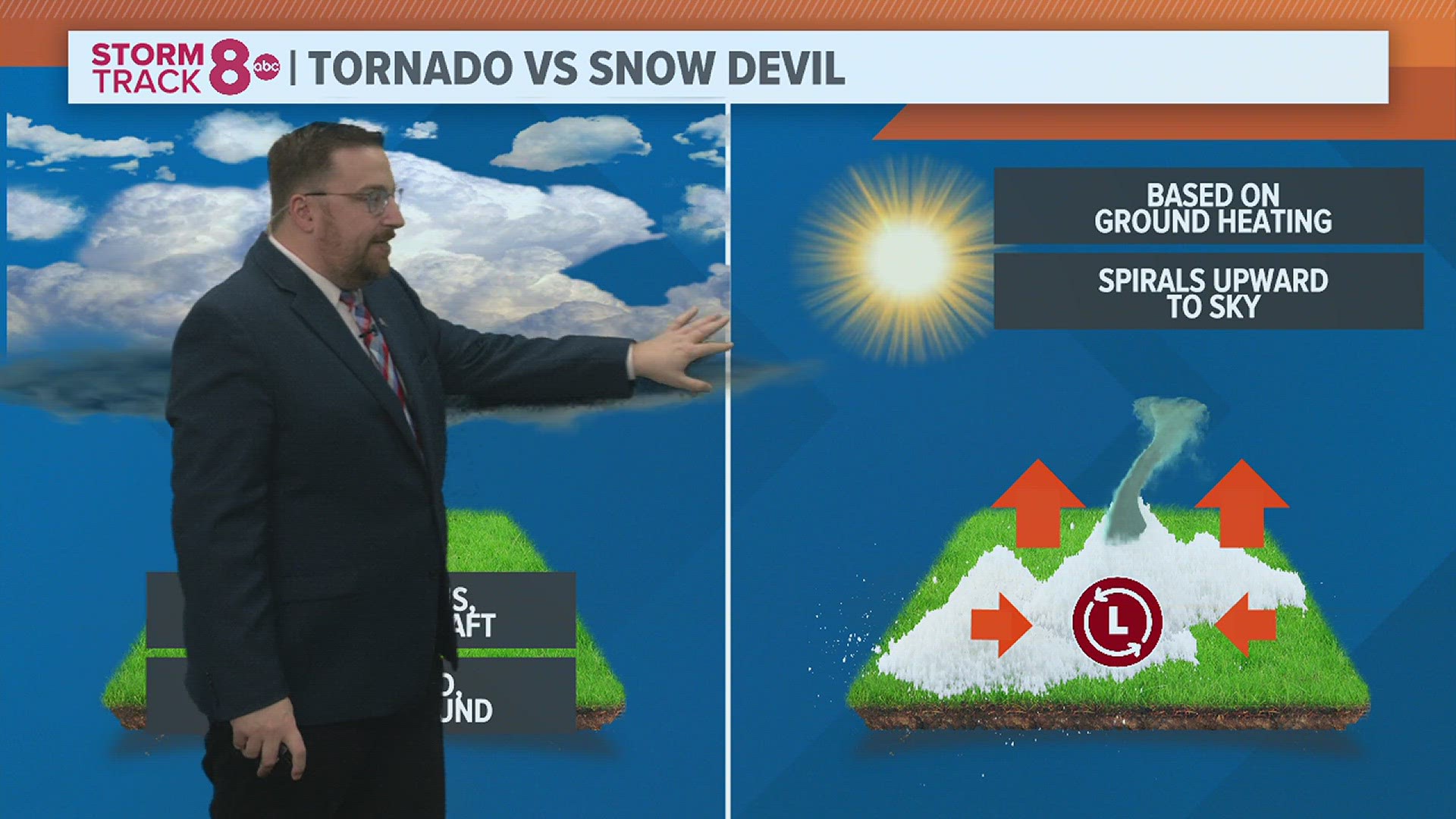MOLINE, Ill — A tornado in the winter? Sure, that's not uncommon at all. We've seen them here in the Quad Cities, including during the winter months. What about an actual tornado made out of snow? Laura and Rob from Rock Falls asked, "Have you ever heard of a snow-wrapped Tornado?" Let's dig in!
Yes, the elusive 'snownado' is real
While it likely won't cause any damage, the whirl of wind that lofts up light and fluffy snow is technically classified as a type of tornado, equal to that of the dust devil you would see during the spring and summer months.
On social media, there are a few video clips of 'snownadoes' in action, including this one from Idaho. You'll notice that the terrain includes mountains, one of the factors that influence the development of this feature.
How it differs from a traditional tornado
Traditional tornadoes require a few more ingredients to develop, including warm, moist air near the ground and quite a bit of spin above the ground, known as wind shear. All of these come together within a supercell thunderstorm.
Your typical dust devil and snow devil work with a much different process that doesn't involve a thunderstorm at all. Instead, a temperature difference between the ground and the air above it works in conjunction to produce the spinning motion.


Above you can see the key differences. Heating near the ground produces a micro area of low pressure that spins. Rising warm air then lifts that spinning motion vertically picking up anything in its path. Wind speeds are not as strong as a traditional tornado, but strong enough to make it visible with snow in this case. Dust devils and snow devils also start from the ground up, rather than the cloud down to the ground.
If you happen to catch one, consider yourself lucky. They are quite rare. No fear, though. These do not cause damage.
Have a question you would like me to answer for an upcoming Ask Andrew segment? Submit it, here!
Watch more news, weather and sports on our YouTube channel

